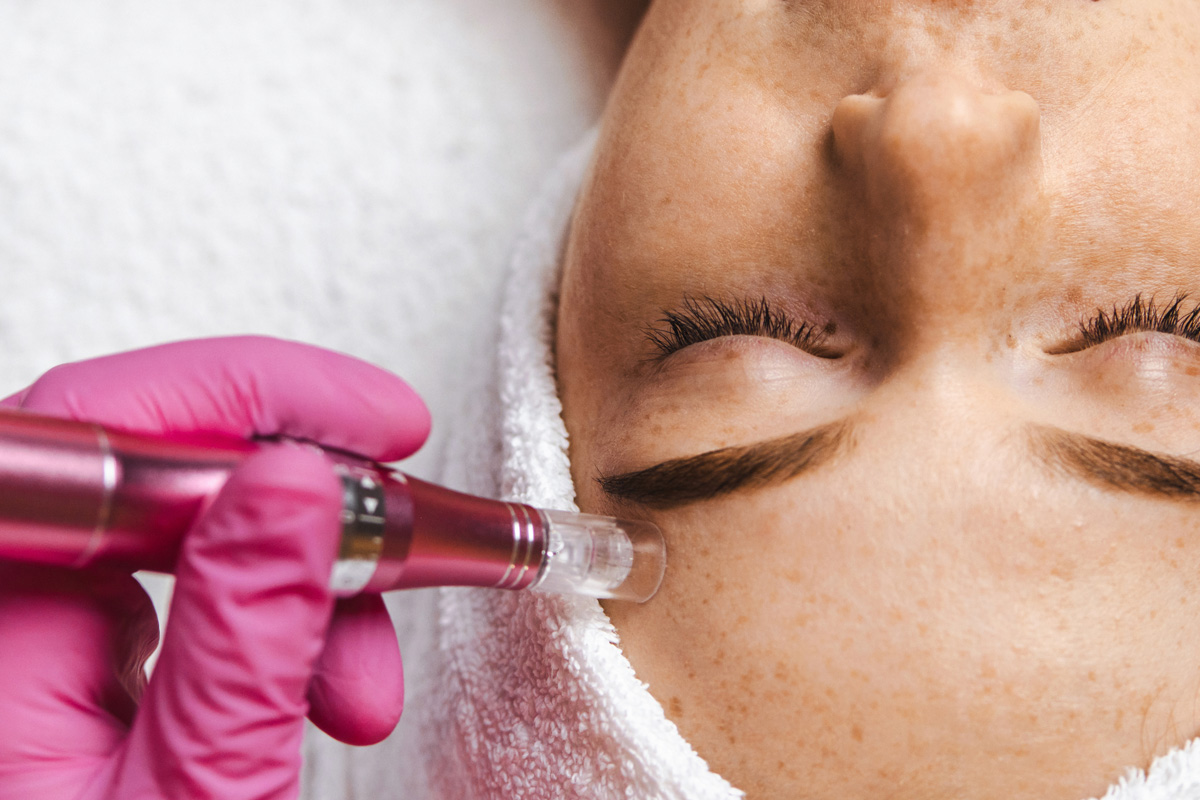Revitalize Your Skin with Microneedling Sessions

Microneedling, a cutting-edge cosmetic procedure, has gained popularity for its ability to rejuvenate the skin and improve overall appearance. As the beauty industry continues to evolve, more individuals are seeking effective treatments that offer long-lasting results. Among these, microneedling stands out for its minimal invasiveness and impressive outcomes. This article delves into what microneedling entails, how it works, and why it has become a favored option for those looking to revitalize their skin.
Understanding Microneedling
Microneedling in Dubai, also known as collagen induction therapy, involves the use of a device equipped with fine needles that create tiny, controlled punctures in the skin's surface. This process stimulates the body's natural healing response, triggering the production of collagen and elastin—two essential proteins responsible for maintaining skin elasticity and firmness. As the skin heals, it becomes more resilient and youthful in appearance.
The procedure is typically performed by trained professionals in a clinical setting, ensuring a safe and hygienic environment. Before the treatment begins, a topical anesthetic is applied to minimize discomfort. Once the numbing agent takes effect, the practitioner uses a microneedling device to create micro-injuries in the targeted areas. The entire process usually takes about 30 to 60 minutes, depending on the size of the area being treated.
What to Expect During the Procedure
Before undergoing microneedling, it’s essential to consult with a qualified dermatologist or licensed aesthetician. They will assess your skin type, discuss your goals, and determine if microneedling is the right option for you. During your consultation, you may also discuss your medical history and any skin conditions you may have.
On the day of your appointment, you will arrive at the clinic and undergo a pre-treatment consultation. The practitioner will cleanse your skin thoroughly to prepare it for the procedure. After applying the numbing cream, you can relax while waiting for it to take effect. Once you are comfortable, the microneedling session will begin.
The practitioner will move the microneedling device across your skin in a systematic manner. You may experience slight discomfort, similar to a light scratching sensation, but most patients tolerate the procedure well. The needles penetrate the skin at varying depths, depending on the treatment area and the specific concerns being addressed.
Post-Treatment Care
Following the microneedling session, you can expect some redness and mild swelling in the treated area, akin to a sunburn. These effects are temporary and typically subside within a few days. Your practitioner will provide specific aftercare instructions to ensure optimal healing and results. It's crucial to avoid direct sun exposure, harsh skincare products, and strenuous exercise for a few days post-treatment.
During the healing process, your skin will begin to shed old cells and regenerate new ones. Many patients notice improvements in their skin's texture and tone within a week or two. However, optimal results usually become apparent after several sessions. For most individuals, a series of three to six treatments spaced four to six weeks apart is recommended for the best outcome.
Enhancing Results with Additional Treatments
While microneedling is effective on its own, many individuals choose to enhance their results by incorporating additional treatments. For instance, combining microneedling with topical serums or PRP (Platelet-Rich Plasma) therapy can amplify the benefits of the procedure. These complementary treatments can further improve skin hydration, promote healing, and enhance the overall rejuvenation effect.
Topical serums infused with hyaluronic acid, vitamins, and antioxidants can be applied immediately after microneedling to nourish the skin and boost its healing process. The micro-channels created during the procedure allow these serums to penetrate deeper, maximizing their effectiveness.
PRP therapy involves drawing a small amount of your blood, processing it to concentrate the platelets, and then applying it to the microneedled area. The growth factors in PRP can accelerate healing and further stimulate collagen production, leading to more noticeable results.
The Benefits of Microneedling for All Skin Types
Microneedling is suitable for various skin types and tones, making it a versatile treatment option. Whether you're dealing with acne scars, fine lines, or general skin texture issues, microneedling can address these concerns effectively. Additionally, it is a relatively quick procedure with minimal downtime, allowing individuals to return to their daily activities shortly after treatment.
As a customizable treatment, practitioners can adjust the needle depth and technique to cater to each patient's specific needs, ensuring that everyone can achieve their desired outcomes. The safety and effectiveness of microneedling make it a popular choice among those looking to revitalize their skin.
Conclusion
Microneedling sessions provide a revolutionary approach to skin rejuvenation, offering individuals the opportunity to achieve a more youthful and radiant complexion. By stimulating collagen and elastin production, this innovative treatment can effectively address various skin concerns, making it a go-to option for many. As you consider revitalizing your skin, consulting with a qualified professional will help you determine if microneedling is the right choice for you. With the potential for transformative results, it’s no wonder that microneedling has become a leading treatment in the realm of skincare.